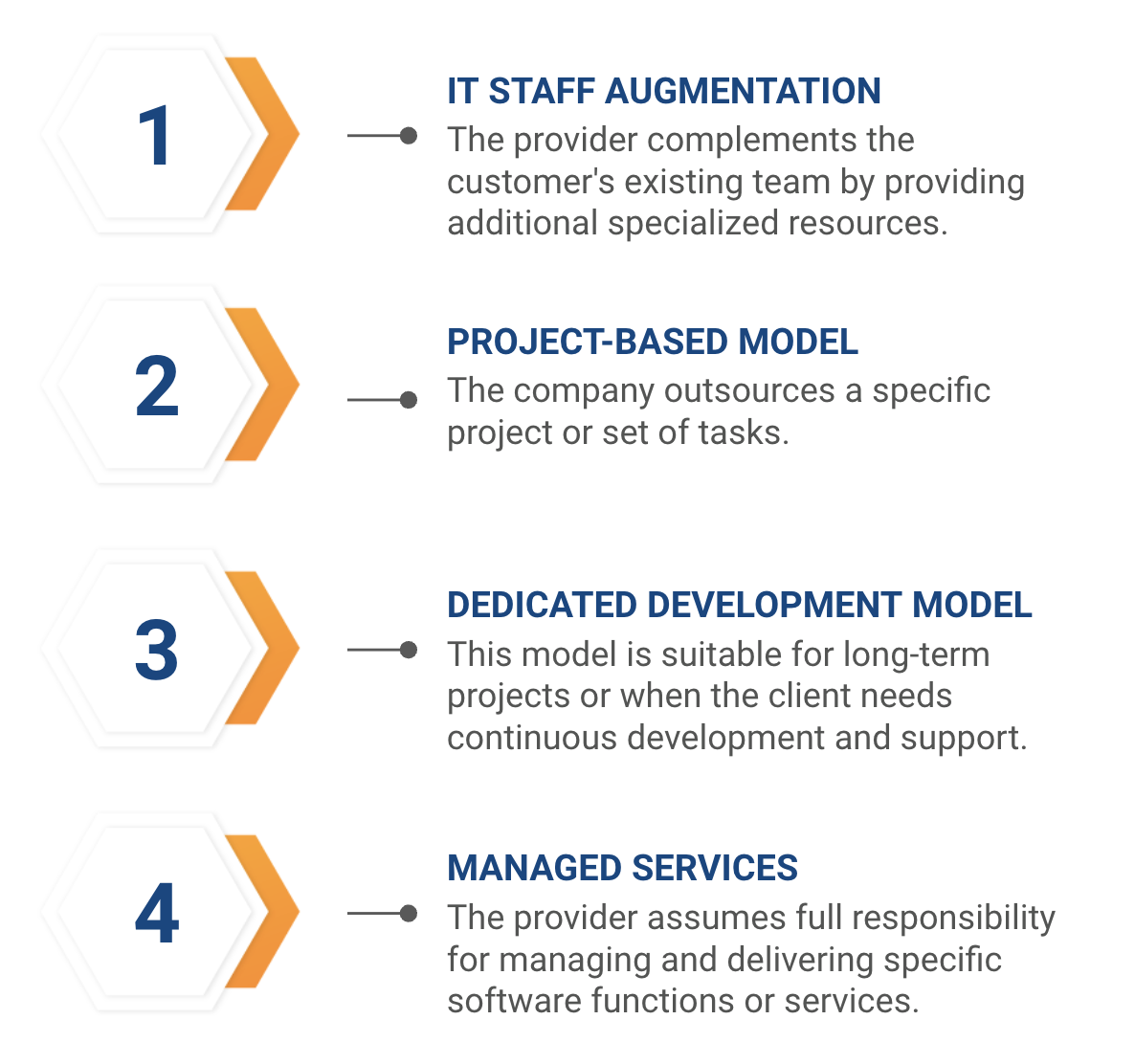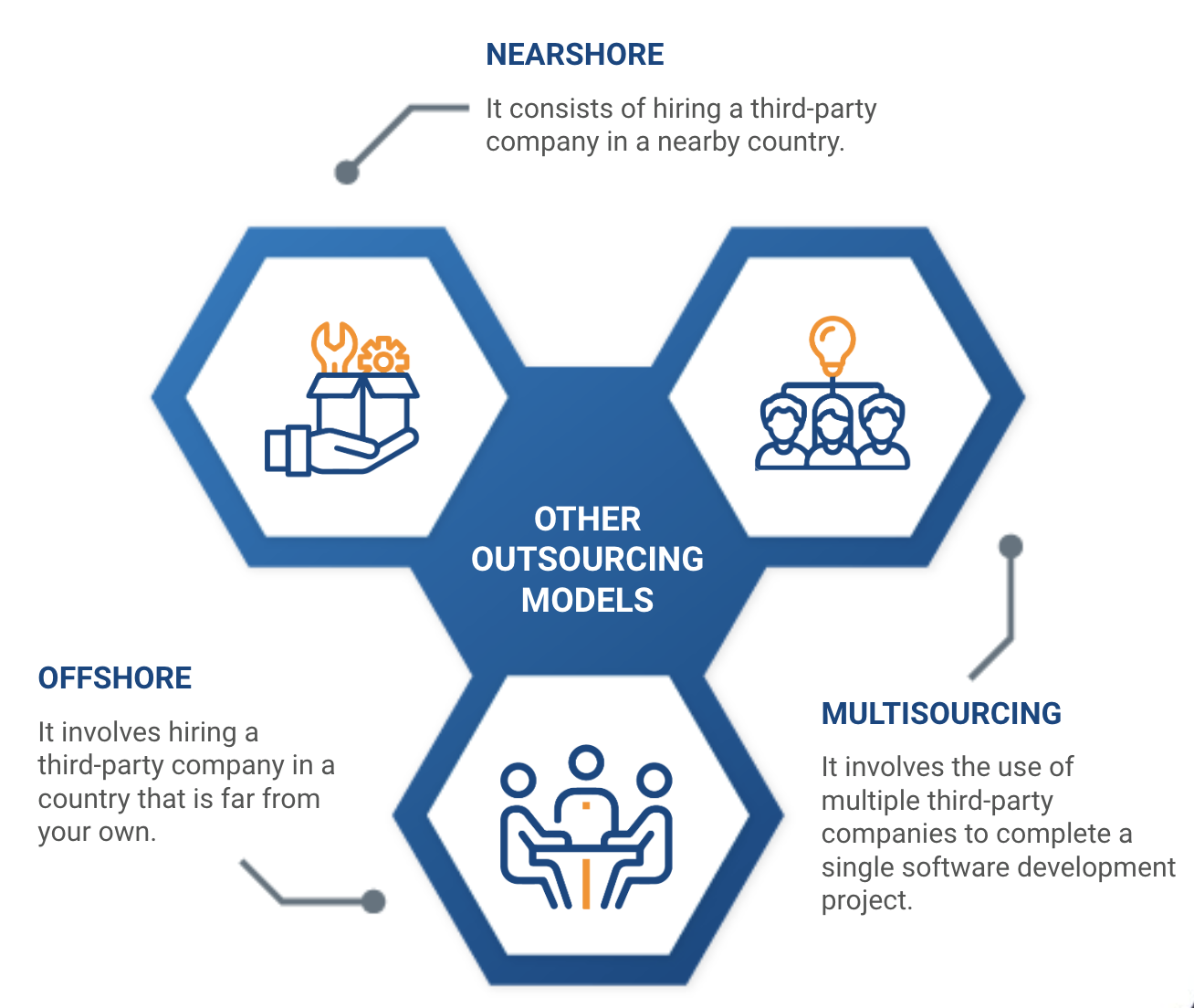
Companies are increasingly aware of how useful software outsourcing can be to achieve their business objectives and excellence in their software projects. If that support and expertise is at hand, why not take advantage of it?
For example, many businesses have decided to hire software outsourcing services to manage their IT services. According to data from the Statista firm, the global market for managed services was valued in 2021 at 161 billion dollars and it is expected that by 2027, this same market will amount to 300 billion dollars. Undoubtedly, a growth that demonstrates the demand and usefulness of this kind of services.
Software outsourcing is also decisive when developing software, since it injects agility into the ongoing project, as well as expertise and new skills that can drive innovation in that software product. This is exactly what we will talk about in this article, about those software outsourcing models that you can implement in your next project.

Most popular software outsourcing models that you can adopt in your next software project
Let's start by defining what software outsourcing is: It is a practice that consists of delegating the development, maintenance or management of computer applications to an external company that specializes in these services. This modality allows organizations to access qualified talent, reduce operating costs, increase efficiency and software quality, and quickly adapt to market changes.
Now we will talk about the most popular software outsourcing models:
IT staff augmentation
In this model, the software outsourcing company complements the client's existing team by providing additional specialized resources. It must be made clear that the client always maintains control and management of the project, while the software outsourcing company helps in the recruitment and integration of the necessary team members. This model is useful when there is a temporary need for specialized skills or when the client wants to rapidly scale the team.

IT staff augmentation can be applied in various scenarios, such as:
- When you need to develop a specific project that requires technical skills that are not internally available, or that need to be temporarily reinforced.
- When you want to access global talent, without geographical or cultural limitations, and with flexible hours and languages.
- When seeking to reduce operating and administrative costs associated with human resource management.
- When you want to improve the quality and productivity of work, by having professionals who are motivated, updated and focused on the objectives of the project.
- When you want to quickly adapt to market changes and customer demands, having the ability to scale up or down your team as needed.
Project-Based model
In this model, the company outsources a specific project or set of tasks. The scope, requirements, and deliverables are defined in advance, and the external company is responsible for delivering the project within the agreed timeframe and budget.
In these situations, this software outsourcing model can be implemented:
- When the client has a clear idea of what he wants, but does not have the resources or technical capabilities to carry it out.
- When the client wants to outsource part or all of their project, to focus on their core business or other strategic priorities.
-When the client seeks to innovate or improve his competitiveness, through the incorporation of new technologies or work methodologies.

Dedicated development team
In this model, the outsourcing company provides a dedicated team of software developers and professionals who work exclusively on the client's projects. The customer has full control over the team and can directly manage and communicate with team members. This model is suitable for long-term projects or when the client needs continuous development and support.
Managed services
Under this model, the outsourcing company assumes full responsibility for managing and delivering specific software functions or services. This may include software maintenance, support, testing, or infrastructure management. The outsourcing company ensures that service levels and performance metrics are met, while the client focuses on their core business.
You can hire managed services in these situations:
- When the company does not have sufficient or qualified personnel to manage its own IT, or when it wishes to reduce the fixed costs associated with this department.
- When the company needs to quickly adapt to market changes.
- When the company wants to improve the performance, availability and security of its infrastructures and applications, and avoid possible failures, interruptions or computer attacks that could affect its business.
- When the company wants to access the latest technologies and tools available in the market, without having to invest in their acquisition, installation or updating.
In addition to these three main models, there are also a number of other software outsourcing models that can be used for software development. These include:
Nearshore outsourcing
This model consists of hiring a third-party company in a nearby country. This can be a good option if you want to avoid language and cultural barriers that can be associated with outsourcing abroad.
Offshore outsourcing
This model involves hiring a third-party company in a country that is far from your own. This can be a good option if you want to reduce your development costs or need access to a large pool of qualified developers.

Multisourcing
This model involves the use of multiple third-party companies to complete a single software development project. This can be a good option if you need to get the best of both worlds, such as the cost savings of offshore outsourcing and the cultural familiarity of offshore outsourcing.
“Multiple contracting is vital for companies that have a sudden high demand for their products. When current suppliers cannot meet all the demand, the company tends to look for other suppliers that can meet its needs”, they added in an Outsource Accelerator article.
Do you need software outsourcing services? At Rootstack, we have +12 years of experience supporting companies with their projects and in their digital transformation. Contact us!
We recommend you this video


